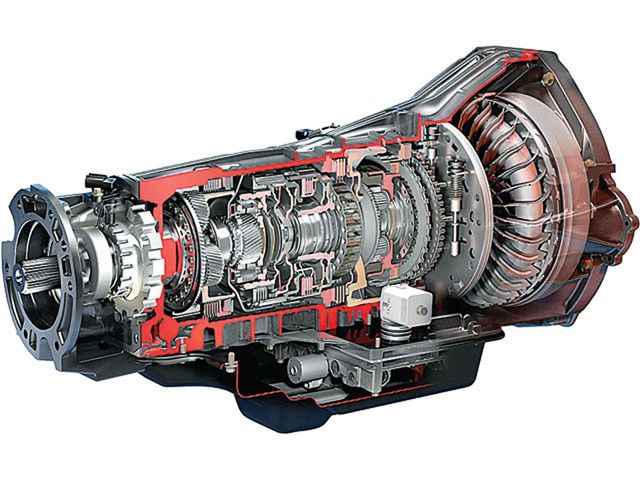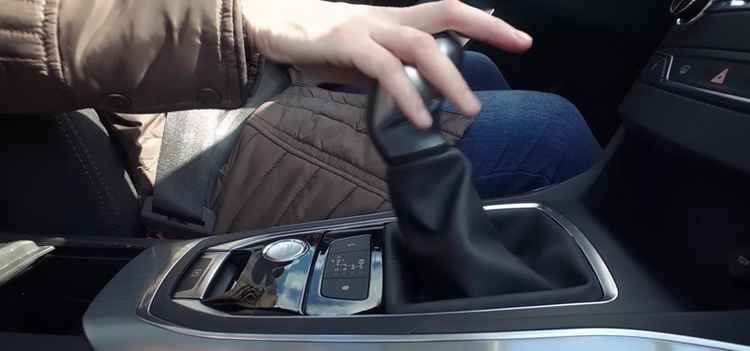When buying a car, the future car owner is faced with the problem of choice. It can be the most diverse: engine size, equipment, body,. Nowadays, gearboxes are very different: mechanical, automatic, robotic and CVT. Most of all, car owners are concerned about the choice of "automatic" or "robot", since not everyone knows how they differ and which is better. Below we will try to tell you what are the differences between these two types of automatic transmission, and what to choose.
How the machine works
The automatic transmission is remarkable in that it can shift gear ratios on its own. But this is done almost without the use of electronics on "bare" mechanics.
The main role here is played by the gearbox and torque converter. The latter ensures that the switching is carried out without jerks and the riders do not shake when moving from one stage to another. It is noteworthy that 5, 6, and even 8 speeds can be installed in an automatic transmission. Such a large number of them is due to the fact that the car can more smoothly and flexibly change steps depending on the driving speed.
Switching occurs during an increase or decrease in speed. The faster the engine spins, the more the oil pressure in the torque converter increases. The more pressure, the higher the speed. The scheme is simple and uncomplicated. Also, a similar approach, as mentioned above, allows you to assemble functional automatic transmissions almost without the use of electronics.
How the robot works
Here everything is arranged completely differently. If in the previous case the control was carried out using a gearbox, and the switching was carried out under oil pressure, then here the work of monitoring the revolutions was assigned to an electronic device, and the switching is carried out as in a mechanical (manual) gearbox.
The whole difference lies only in the presence of the control unit.
When a certain speed is reached, the microcomputer decides that it is time to switch to a higher speed and sets in motion the rods that block the gears. As a matter of fact, because of such a symbiosis of mechanics and electronic brains, this gearbox was called a “robot”.
Pros and cons of the machine
Let's start the "debriefing" with the pros:
- Gear shifting in an automatic transmission is smoother and smoother.
- Automatic boxes can be equipped with 8 steps. This allows you to select the most optimal engine speed for switching. That is, the operating speed of rotation of the shaft can be in the range of 2-3 thousand revolutions. Thus, the machine will always move with the optimum flow rate, power or speed.
- An automaton is more reliable than a robot.
And cons:
- The machine consumes a little more fuel.
- gear is produced, although not so often, but it costs more.
- requires periodic oil changes, which also affects the owner's wallet.
Pros and cons of a robot
And here, too, let's start with finding out why a robot is better than an automaton:
- There is less fuel consumption.
- Given that it is similar to a mechanical one, the cost of its repair is much cheaper.
And cons:
- Considering that here the gear shifting occurs due to the rigid coupling of the gears, jerks can be observed when switching. This is especially noticeable by the time when the robotic gearbox is already in need of repair.
- The following point emerges from the previous one: gearbox parts wear out faster. That is, here all the gears are connected "dry" without the use of oil. Accordingly, if your driving style is aggressive, then soon chips and scuffs will appear on the metal, and chips will fill the gearbox, further rendering its elements unusable.

Based on the foregoing, the following conclusions can be drawn:
- If reliability and uptime are a priority for you, then an automatic transmission clearly outperforms a robotic one, since all parts are constantly lubricated with oil and shift more smoothly, further increasing the life of the parts.
- Robotic gearbox consumes less fuel.
- In turn, for exotic lovers, a robotic gearbox, unlike automatic transmission, can offer an interesting option: manual gear shifting. That is, the control stick can be moved to a special position where the driver can independently choose whether to upshift or downshift.
- While driving, the robot, in comparison with the automatic transmission, “freezes”, the switching occurs with some delay.
- However, the robotic gearbox is structurally simpler, and, accordingly, its repair will cost much less, and you can carry out this repair yourself or entrust "garage experts" - they can do it!
Conclusion
As you can see, both there and there have their positive and negative sides regarding the checkpoint. And each of the candidates for the purchase can oppose a significant difference to its competitor. But most motorists from our country prefer automatic transmission, even despite its expense and the high cost of repairs. Why? The decisive factor is the following difference: an automatic transmission is more reliable than a robotic gearbox. And this is the decisive factor.

One enthusiast even did a study and found that the amount saved on fuel and cheaper repairs is less than that saved on the rarity of breakdowns. As a result, the automatic transmission costs the owner simply cheaper than a robotic gearbox. And that is why the automatic gearbox is better suited for our conditions.
But, at the same time, almost all of Europe and America have already moved to "robots". Why is that? What makes Westerners think that a robot is better? It's all about the national problem, whose name is "roads". When driving on normal roads without pits, bumps and potholes, the robot is a really reliable and economical thing. And with the driving style that is popular with us: “accelerated, slowed down,” switching occurs so often that parts wear out and break quickly.







